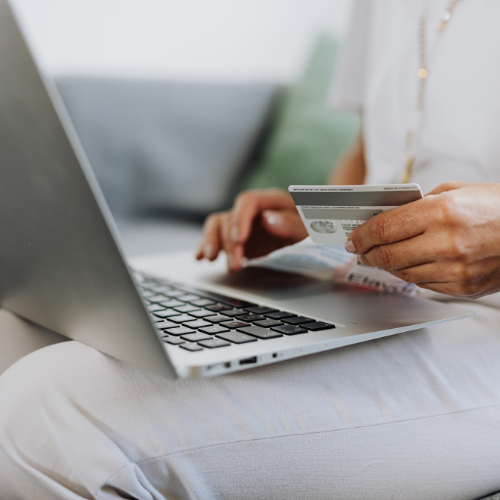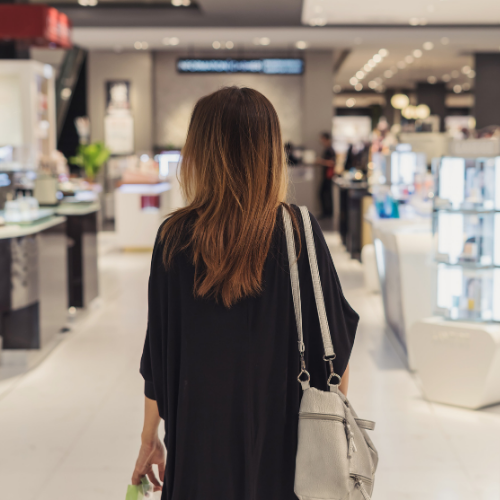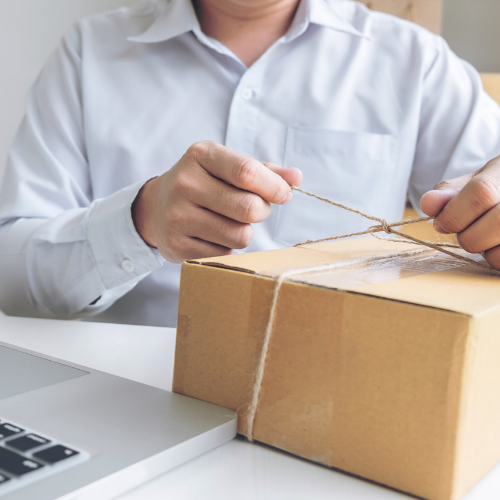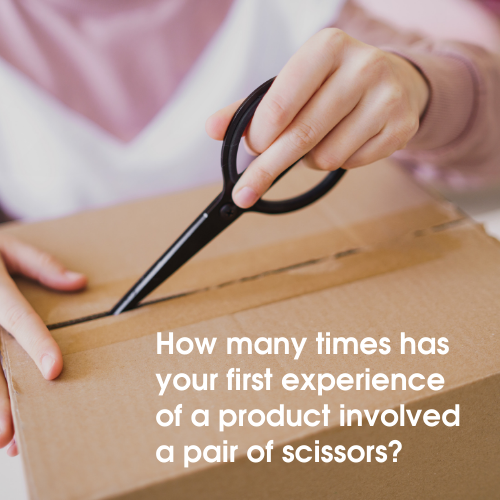Luxury retail in an e-commerce world
Beauty, Experience, In the news, Spirits, SustainabilityAdapting to e-commerce
We have all adapted to the habit of online shopping in the last few years, and especially so during 2020, while many non-essential shops were closed. Most sectors have seen an increase in online purchasing, however, and many retailers have succeeded in adapting their business models to accommodate buying habits, especially within Direct-To-Consumer channels.
Websites have been updated to include increasingly sophisticated e-commerce functions, and we have noticed that there is demand from our customers for products that can work on “digital” as well as physical shelves. Smaller companies have been successful too, developing personal relationships with their customers, taking orders over the phone or by email, and potentially creating long-lasting relationships in the process through Direct-To-Consumer channels.
Being adaptable and understanding consumer habits, therefore, has been one of the ways to survive the turmoil of 2020. And, looking to the future, these habits have opened up new, more global channels of business for many companies once stores open up again.


Achieving the in-store experience in an eCommerce world
We have talked, in the past, about the customer unboxing and brand experience, and how important this is especially to luxury brands. So, in the post-COVID-19 world, where it may take time for our habits to return to shopping in stores, what can brands do to ensure that the brand experience is equal to, or better than it had been pre-2020. Previously, customers could pick up a beautifully packed product from the shelf, pay for it, and take it home in an equally beautiful bag. No need for padding, shipping labels, sealed boxes to protect the contents, and no need for scissors to break into the package on arrival.
The psychology of unboxing
Interestingly, research suggests that the unboxing experience can influence the customer’s experience of a brand, with data showing consumers satisfaction is positively impacted when an item is received in a coloured pack, versus a brown kraft box.
At Hunter Luxury, we know how important the brand story is to our clients, so have carried out some of our own research into the unboxing experience of luxury items we purchased online, and it was not pretty. Tearing open a shipping bag or plain box, then unfurling layers of tape to be presented with an inflatable bottle sleeve, with the secondary packaging tucked alongside does not say luxury, however good the intentions of the packer were.
We have most probably all had a disappointing unboxing experience over the last year, so having spoken to clients about this challenge, we, as a packaging supplier, but also consumers, can appreciate that there is an opportunity to address this issue.

Protection over brand experience
Protection is a key requirement for e-commerce purchases and there is a significant difference between online purchases and retail bought items – the customer is responsible for the item as soon as it has been purchased in-store, however, in the case of online, the supplier and courier are responsible until the item is signed for, and breakages are costly and something many companies are challenged by, so obviously protection is at the forefront of minds when it comes to shipping.
But how about we think about the experience in a different way - the physical item might be safely wrapped to prevent damage, but by using practical but ugly packaging, what damage has been done to the brand?
The sustainability versus luxury debate.
We are increasingly being asked to produce more sustainable packaging in line with our customer’s sustainable objectives. Many beauty and spirits brands are still working out what sustainability means to them, and how to manage it when shipping and protection also have to be factored in.
Usually, the first thought when we hear about sustainability is recycling, or eco materials. However, recent research tells us that often consumers are confused about how to recycle, and despite best efforts to purchase from sustainable brands, packaging often ends up in the non-recyclable waste.
Many brands are getting around the sustainable yet protected challenge by using alternative packaging padding - for example, honeycomb card creates a very rigid sleeve, or recyclable inflatable pouches can provide much-needed protection.
But the important factor, we think, is that the brand experience should be part of the entire experience of unboxing, not just once the outer packaging and protection have been removed. And potentially, another branch of sustainability by providing a viable re-use purpose is a direction that could solve the challenge of luxury and protective packaging while still offering a sustainable solution.

A practical solution for this ongoing challenge
The team at Hunter Luxury has had this challenge in mind for several months, in particular for the premium and luxury spirits sector and, with an expanding Direct-To-Consumer marketplace, we have come up with a solution that offers protection, luxury brand experience and sustainability. If this is something that your brand is currently looking for, give our team a call and we can discuss your needs.
Find out more about our work, or talk to us about your project by contacting Paul Hamilton– paulhamilton@hunterluxury.com or Pippa Bell (Beauty division) – Pippabell@hunterluxury.com



